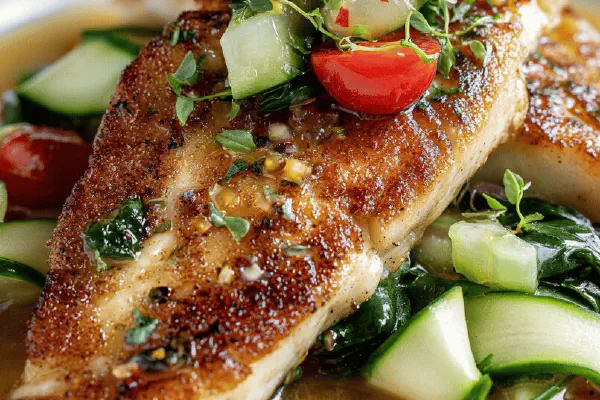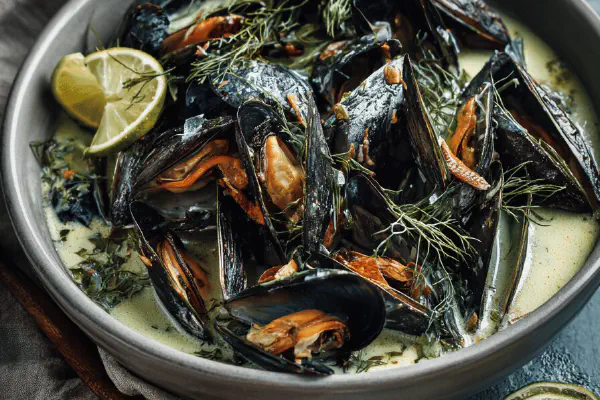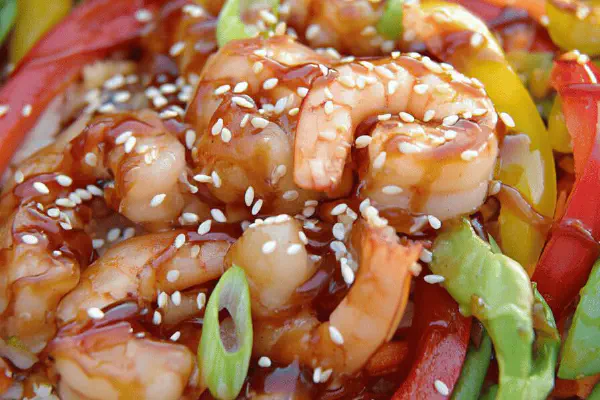Smoky tomato tuna sauce

By Emma
Certified Culinary Professional
Ingredients
- 50 g (1/3 cup) roasted red pepper, diced
- 1 small shallot, finely chopped
- 15 ml (1 tbsp) extra virgin olive oil
- 1 litre (4 cups) smoky grilled tomato sauce (use charcoal grill or broiler char tomatoes, then blend)
- 30 g (2 tbsp) capers, drained
- 1 can 198 g (7 oz) tuna chunks in oil, drained
- Fresh basil leaves, torn (optional for garnish)
- Salt and freshly cracked black pepper, to taste
About the ingredients
Method
- Heat olive oil in a medium saucepan over medium heat. Toss in chopped shallots and diced roasted red pepper. Stir often. Aromatic sweet sharpness should bloom within about 4 to 5 minutes—look for softened edges and start of golden color. Don’t rush here, flavor base is everything. Notice faint smell of roasting peppers melding with sweet shallots.
- Pour in smoky grilled tomato sauce. Stir well to combine. Add capers now; they bring saltiness and slight tanginess, replacing olives. Bring sauce to gentle simmer, watch for tiny bubbles breaking on surface, small steam wisps rising. Allow simmer for 10 minutes, stirring occasionally. Sauce will thicken, brightening in color; edges will darken slightly as sugars caramelize. If it feels too thick, splash small water or stock, but sauce should coat spoon confidently.
- Reduce heat to low and gently fold drained tuna chunks into sauce. Tuna should stay in flakes, not mush. Warm through for 4 to 5 minutes only—too much heat will toughen fish. Stir very gently now; texture contrast key here.
- Season with salt and freshly cracked black pepper, tasting often. Remember capers add salty brine already. A pinch of sugar or splash vinegar can balance acidity if needed. Off heat, stir in torn fresh basil for fresh aromatic lift.
- Serve over pasta of choice, spaghetti or penne. Let the sauce cling to noodles, strands glossy and sticky. Watch for those little flecks of red pepper and tuna throughout. A sprinkle of coarse black pepper or basil leaves finishes it nicely. Doesn’t need cheese—flavors stand on their own.
Cooking tips
Chef's notes
- 💡 Heat olive oil medium, not high - prevents bitter burn in shallots and peppers. Watch for edges to soften, golden tint, gives sweet base. Stir constant for even cooking. Use smell - faint char and sweet meld signals ready for tomato addition.
- 💡 Simmer sauce low; bubbles small, steady. No rolling boil or sauce will lose brightness and sugars scorch. If thickens too fast, splash stock or water sparingly, keep coating but still fluid. Stir occasionally; keep watch on edges darkening gently, that caramelization deepens smoky notes.
- 💡 Folding tuna late critical. Too hot or too long cooking breaks flakes, turns mushy. Warm through only 4-5 minutes max. Gently fold with spatula, keep pieces intact. Texture contrast—soft flakes and tender peppers—is key sensory layer.
- 💡 Capers bring briny tang and salt punch, so add salt sparingly. Taste often. Splash of vinegar or pinch sugar balances acidity if tomato base sharp. Use fresh basil off heat to prevent bitterness, brighten aroma last second before serving.
- 💡 Roasted red pepper replaces celery’s crunch but softer and sweeter, watch for fibrous strings. If unavailable, substitute with roasted poblano or sweet bell pepper. Tomato base varies: char fresh tomatoes on grill or broiler for umami, canned fire-roasted as fallback. Olive oil quality matters; grassy, fruity oils better than plain.
- 💡 Pasta water is secret if sauce too thick—adds starch, helps sauce cling to noodles. Add gradually, not dump in. Watch sauce texture after adding; it should shimmer, coat spoon lightly but hold thick enough to cling well. No cheese needed; flavors stand alone.
- 💡 Slow aromatics build foundation; patience key here. Medium heat, oil shimmering, shallots translucent with golden edges. Random bursts of roasted pepper smell mingle, signals just right. Rushing here loses subtle sweetness that gives sauce depth. Keep stirring; avoid burnt spots.
- 💡 If tuna oil too strong or greasy, drain well and blot before folding in. Avoid excess oil pooling in sauce, can dull freshness. If dry-tuna only accessible, add small splash extra virgin olive oil for flavor and silkiness without heaviness.
Common questions
Can I use fresh tomatoes instead of grilled ones?
Yes, roast or broil until charred edges form. Adds smoky notes missing otherwise. If no broiler, add smoked paprika or chipotle powder to compensate. Avoid raw tomato flavor that dulls sauce.
What if I don’t have capers?
Substitute with chopped green olives or chopped pickles for tang. But olives add oiliness, change mouthfeel. Rinse capers if too salty. Capers bring that sharp salty punch hard to mimic exactly.
Why does my tuna sauce get mushy?
Usually overcooking tuna chunks. Warm gently only. Stir gently to keep flakes distinct. Too long or high heat coagulates proteins, dries out texture. Fold in off the heat if unsure.
How to store leftovers?
Sauce keeps in fridge 2-3 days in sealed container. Reheat gently on low, add splash water or stock if thickened too much. Tuna texture softens but still good. Freeze not recommended; tuna flakes get mealy.



